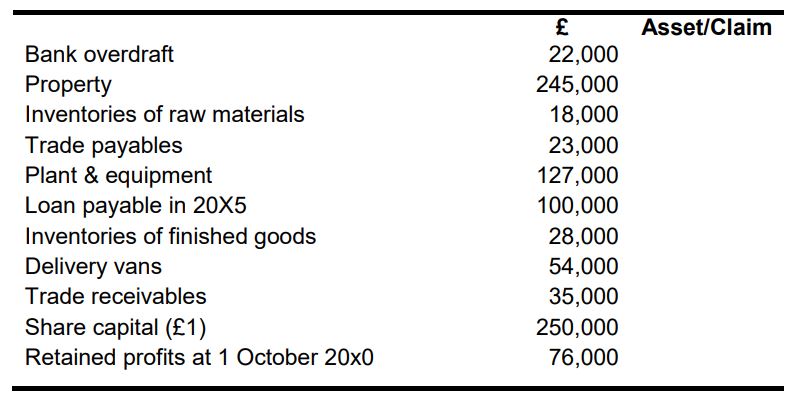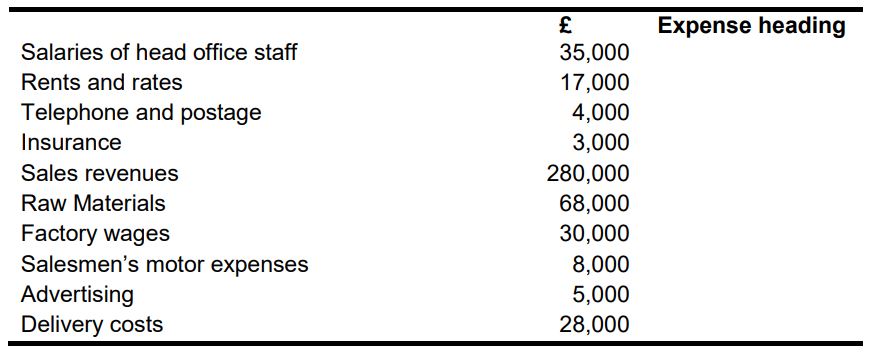| University | Edinburgh Napier University (ENU) |
| Subject | Managerial Finance |
What is the module about?
After studying this module you should be able to:
- Calculate and explain the significance of key ratios for assessing the financial
position of the firm. - Analyze corporate performance from an internal and external perspective
- Apply a range of management accounting techniques to various business
situations relating to analysis, planning, control, and decision making.
Assessment
You will be assessed in this module by coursework and examination.
Coursework
Your coursework will comprise a report requiring you to examine the recent financial performance of a major company and apply the tools of financial analysis to present a report on the company and its future.
Examination
The examination paper will have two sections. Section A will comprise three
computational questions worth 30 marks each, from which you will be required to answer two. Section B will comprise three discursive questions from which you will also be required to answer two. The questions will be based on the main topics covered in the module.
Topics
1. Introduction to the module. Primary Financial Statements: Income Statement, Statement of Financial Position and Statement of Cash Flows.
2. Interpreting Financial Statements including profitability, solvency, efficiency and investment ratios.
3. Cost classification, cost behavior, and CVP analysis.
4. Short-term and long-term decision making.
5. Budgetary control, flexible budgeting, divisional performance measurement.
Hire a Professional Essay & Assignment Writer for completing your Academic Assessments
Native Singapore Writers Team
- 100% Plagiarism-Free Essay
- Highest Satisfaction Rate
- Free Revision
- On-Time Delivery
Topic 1: Primary Financial Statements
Subject Content
In this lecture, we will consider the main primary statements to understand what they contain and how they can be used to carry out a financial analysis of an organization.
Learning objectives
1. Explain the purpose of accounting and the needs of accounting information users
2. Explain the nature and purpose of the main financial statements
3. Understand the objectives of financial reporting.
4. Describe the basic assumptions of accounting.
Question 1
The following is a list of assets and claims of Minor Ltd. at 30 September 20X1 before this year’s profit has been included:

Required:
a) Review the list of balances and decide whether they are an asset or a claim of Minor Ltd.
b) Write out a statement of financial position in the standard format incorporating these figures and using the balance sheet equation to deduce the profit or loss for the year. (this will be the figure that makes the balance sheet balance)
Question 2
The following is a list of revenue and expenses items of Minor Ltd. for the year ended September 20X1:

In addition to the above interest charges of £13,000 were paid in the year and the corporation taxation charge was estimated at £20,500. During the year the company paid a dividend of 5p on each £1 ordinary share
Required:
Write out an income statement in the standard format (with headings of Cost of Sales, Selling and Distribution costs and Administrative costs) incorporating these figures and reconcile the profit or loss for the year with Question 1 above.
Topic 2: Analysis of Financial Statements
Subject Content
In this lecture, we will consider how the financial statements can be used to analyze a company’s financial performance. We will use a range of financial ratios to assess a company’s profitability, efficiency, and solvency. We will also consider the limitations of ratio analysis and the use of the financial statement to assess a company’s financial position and performance.
Learning Objectives
After completing this topic you should be able to:
1. To identify the major categories of ratios that can be used for analysis purposes
2. To calculate important ratios for assessing the financial performance and position of a business
3. To discuss the limitations of ratios as a tool for financial analysis
Topic 3: Costing
Subject content
In this lecture, we will consider Management Accounting and the ways in which this differs from Financial Accounting. We will look at cost classification and in particular consider how costs can be classified according to their behavior. We will then consider cost volume profit analysis and the importance of operational gearing for a company.
Learning Objectives
After completing this topic you should be able to:
1. Understand the difference between Financial Accounting & Management Accounting
2. Identify the role of the Management Accountant
3. Understand the different ways that costs can be classified
4. Distinguish between fixed and variable costs and understand the relationship between cost volume and profit
5. Apply what-if analysis / cost-volume-profit analysis
6. Understand the importance of operational gearing to an organization
Topic 4: Decision Making
Subject content
In this lecture, we will distinguish between relevant and irrelevant costs for decision making. We will then apply marginal cost analysis to short term decision making and consider the importance of non-financial factors when making decisions. We will also look at the different methods that can be applied to the appraisal of long term investment decisions.
Learning Objectives
After completing this topic you should be able to:
1. Distinguish between relevant and irrelevant costs and understand the importance of this distinction for decision-making.
2. Demonstrate the way that marginal cost analysis can be used when making short term decisions.
3. Understand the advantages and disadvantages of the different methods used for investment project evaluation.
4. Apply a range of methods to evaluate investment decisions.
Topic 5: Budgeting and Control
Subject Content
In this lecture, we will look at budgeting and control. We will consider the main purposes and behavioral effects of budgeting. We will also consider how budgets are used as a control mechanism. We will then look at the main measures that are used to measure divisional performance and the potential problems with these measures.
Learning Objectives
After completing this topic you should be able to:
1. Understand the link between the annual budget and the long term strategic plans of an organizations
2. Identify the potential behavioral implications of budgeting
3. Calculate the ROI and RI for a division
4. Explain the problem with these measure of divisional performance
Discussion Question 1
Identify the main users of accounting information and identify what their needs are.
Discussion Question 2
Discuss the major accounting concepts of realization, matching, and prudence.
Discussion Question 3
Discuss the main advantages and disadvantages of debt and equity finance
Discussion Question 4
Going Concern plc has a loan of $30m which is due for repayment in 6 months’ time. The company can afford to pay the loan off in full by selling some short-term investments. However, the Treasury Manager wants to consider keeping the investments and taking out a new loan. What information does the company need in order to make a decision on?
a) Which is the best of a range of new borrowing options on offer?
b) Whether or not to take out a new loan at all?
Singapore Assignment Help has a decade's experience in providing assignment help to ENU students. We understand students' needs therefore we are popular among Singapore university students. Avail our managerial finance assignment help and obtain good marks in your class. We are offering last-minute help for finance assignments so that you can finish your project timely. We help students on how to develop financial statements, cash flows, decision making, and financial reporting.
Looking for Plagiarism free Answers for your college/ university Assignments.
- INDIVIDUAL RESEARCH PROJECT: MERGERS AND THEIR IMPACT
- PSS388 End of Course Assessment January Semester 2025 SUSS : Integrated Public Safety And Security Management
- PSY205 Tutor-Marked Assignment 02 SUSS January 2025 : Social Psychology
- Math255 S1 Assignment-2025 SUSS : Mathematics for Computing
- BUS100 Tutor-Marked Assignment January 2025 SUSS : Business Skills And Management
- CSCXXX SUSS : New System Development Using Java : Soft Dev Pte Ltd Project
- Cloud Computing: Fundamentals, Networking, and Advanced Concepts
- COS364 Tutor-Marked Assignment January 2025 Sem SUSS : Interventions for At-Risk Youth
- FMT309 Tutor-Marked Assignment 01 SUSS January 2025 : Building Diagnostics
- HBC203 Tutor-Marked Assignment 01 January 2025 SUSS : Statistics and Data Analysis for the Social and Behavioural Sciences

